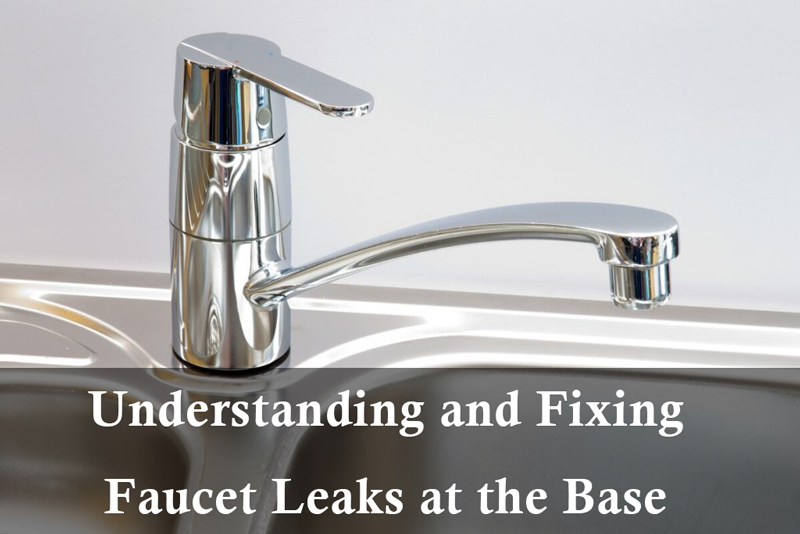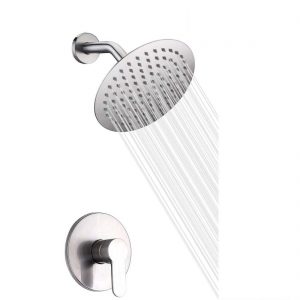Understanding and Fixing Faucet Leaks at the Base: A Comprehensive Guide
Views:569 classificationBlog classificationFaucet Knowledge

A leaking faucet can be a persistent annoyance, leading to water wastage, potential damage to surrounding fixtures, and an unwarranted increase in water bills. If you find your faucet leaking at the base, it’s essential to address the issue promptly to prevent further complications. In this comprehensive guide, we’ll explore the common reasons behind a faucet leaking at the base and discuss potential solutions to help you regain control over your plumbing.
Why is my faucet leaking at the base
1. Faulty O-Rings:
One of the most common culprits behind a leaky faucet at the base is a worn or damaged O-ring. O-rings are small rubber or silicone seals located around the base of the faucet where it connects to the sink. Over time, these rings can degrade due to regular use, causing water to seep through the gaps.
Solution: Replacing the O-ring is a straightforward solution. Start by turning off the water supply to the faucet. Remove the handle and, if necessary, any decorative caps covering the base. Once exposed, you can easily replace the O-ring with a new one of the appropriate size. It’s advisable to lubricate the new O-ring before installation to ensure a proper seal and enhance its longevity.
2. Loose or Worn-out Washers:
Washers play a crucial role in preventing water from leaking around the base of the faucet. If these washers become loose or worn out, they can compromise the seal, leading to leaks.
Solution: Similar to O-rings, replacing worn-out or loose washers is the solution to this issue. Turn off the water supply, dismantle the faucet, and examine the condition of the washers. Replace any damaged or worn washers with new ones, ensuring a snug fit. Regularly checking and maintaining these small components can prevent larger plumbing problems down the line.
3. Corroded Valve Seat:
The valve seat is a critical component that connects the faucet to the spout. If the valve seat becomes corroded, it can cause leaks around the base of the faucet.
Solution: To address a corroded valve seat, it’s necessary to disassemble the faucet and inspect the condition of the seat. If corrosion is evident, you can clean it using a fine-grade steel wool or a specialized valve seat dresser. Once cleaned, reassemble the faucet, and the leak should be resolved. Regular cleaning and maintenance can prevent future corrosion issues.
4. Loose Faucet Base:
Over time, the base of the faucet can become loose due to constant use or insufficient installation. This loosening can create gaps through which water may escape, causing leaks at the base.
Solution: Tightening the base is a straightforward fix for a loose faucet. Use a wrench to secure the nut beneath the sink, ensuring a snug fit. Be cautious not to overtighten, as this may lead to other issues. Regularly checking and tightening the base can prevent this problem from recurring.
5. Worn-out Cartridge or Ceramic Disc:
Faucets with cartridge or ceramic disc valves may experience leaks at the base if these components wear out or become damaged. These valves control the flow and temperature of the water.
Solution: Replacing the cartridge or ceramic disc is the solution for leaks caused by wear and tear in these components. Identify the type of valve your faucet uses, turn off the water supply, and follow the manufacturer’s instructions for replacement. This straightforward fix can restore your faucet’s functionality and eliminate leaks.
6. High Water Pressure:
Excessively high water pressure can contribute to leaks at the base of the faucet by putting additional stress on the internal components, leading to wear and tear.
Solution: Installing a pressure regulator can help control water pressure and prevent damage to your faucet. A plumber can assess your water pressure and recommend a suitable regulator if necessary. Monitoring and maintaining optimal water pressure can prolong the life of your faucet and prevent leaks.
7. Damaged Plumbing Connections:
In some cases, leaks at the base may be attributed to damaged plumbing connections underneath the sink. Loose or compromised connections can allow water to escape and manifest as a leak at the base of the faucet.
Solution: Inspect the plumbing connections beneath the sink for any signs of damage or looseness. Tighten loose connections and replace damaged pipes or fittings as needed. Regularly checking and maintaining these connections can prevent water damage and ensure the integrity of your plumbing system.
Conclusion:
A faucet leaking at the base is a common household issue, but understanding the root causes and implementing timely solutions can save you from the inconvenience and potential damage associated with plumbing issues. Regular maintenance, prompt repairs, and addressing the underlying causes of leaks will not only resolve the immediate problem but also contribute to the longevity and efficiency of your faucet. By taking a proactive approach to plumbing care, you can enjoy a leak-free and smoothly functioning faucet for years to come.
 WEWE Kitchen Faucets
WEWE Kitchen Faucets

您好!please sign in